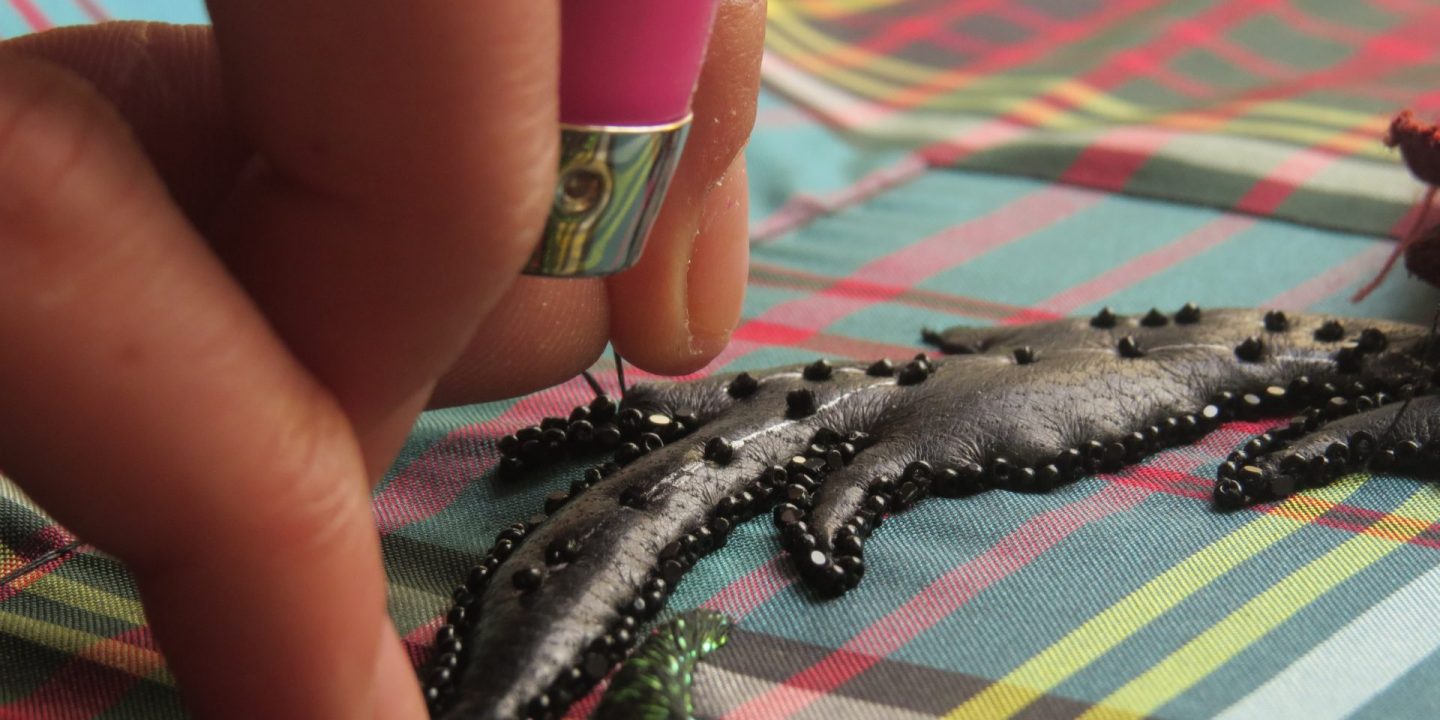

Hand & Lock have just completed a major restoration of two embroidered banners that date from the start of the 20th century. A project of this magnitude begins with a comprehensive study of the object and diligent research into the embroidery techniques and materials used. Then, an understanding of the object’s long history must be undertaken to appreciate why the preservation and restoration must be undertaken. When a company like Hand & Lock engages in the restoration of a precious historic textile they become part of that long object’s history. Woven into every fabric is the history of all the skilled craftsmen and women who have come into contact with the piece. Here we share the story of one such restoration revealing the object’s significance and the stages involved in restoring its former grandeur.
In 1901, at the start of the short reign of King Edward the VII, the Royal School of Needlework completed work on the Monarch’s Garter Banner, a large embroidered panel destined to hang over the Sovereign’s stall in St George’s Chapel in the grounds of Windsor Castle. The banner measured 1.5 metres wide, 1.5 metres tall and divided into four quarters known as quadrants. Each quadrant contained motifs and heraldry associated with the Monarch with two of the quadrants containing three lions stacked above each other – the traditional coat of arms of the Kings of England, perhaps now more popularly associated with the three lions of the England football kit. In this arrangement their pose is described as a ‘Passant Guardant Attitude’ which is heraldry terminology for striding while looking outward. The lions were originally embroidered with silk-shading,
cloth of gold and edged in cord before being appliquéd onto a rich red velvet. The motifs in the other two quadrants were appliquéd over a regal blue velvet and a cloth of gold background. The Royal Arms of Ireland in the form of a winged-female harp in one, and the royal arms of Scotland in the form of a single lion standing upright in profile with his forepaws raised in what is described as a ‘rampant attitude’. The full design would typically be featured at the centre of the Royal Arms of Great Britain and is a commonly used heraldic arrangement that can be seen in crests, on flags and even worn by an officer of arms in the form of his medieval herald’s tabard. This enduring design, modified in 1952 to remove the winged female harp and replace her with a plain Gaelic harp, can be seen at Coronations, at the state opening of Parliament and on the flagpole of Buckingham Palace when the Monarch is in residence.
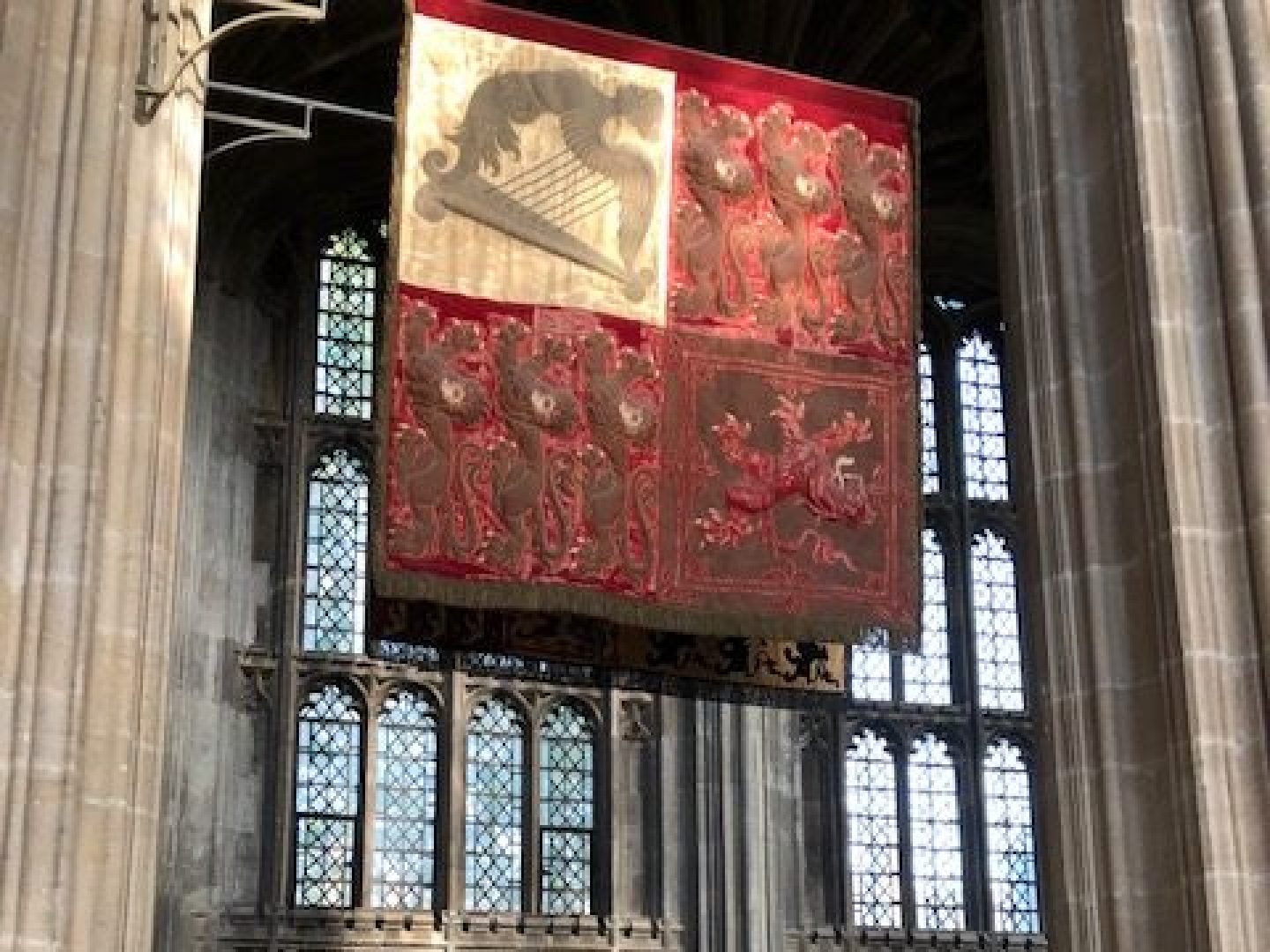
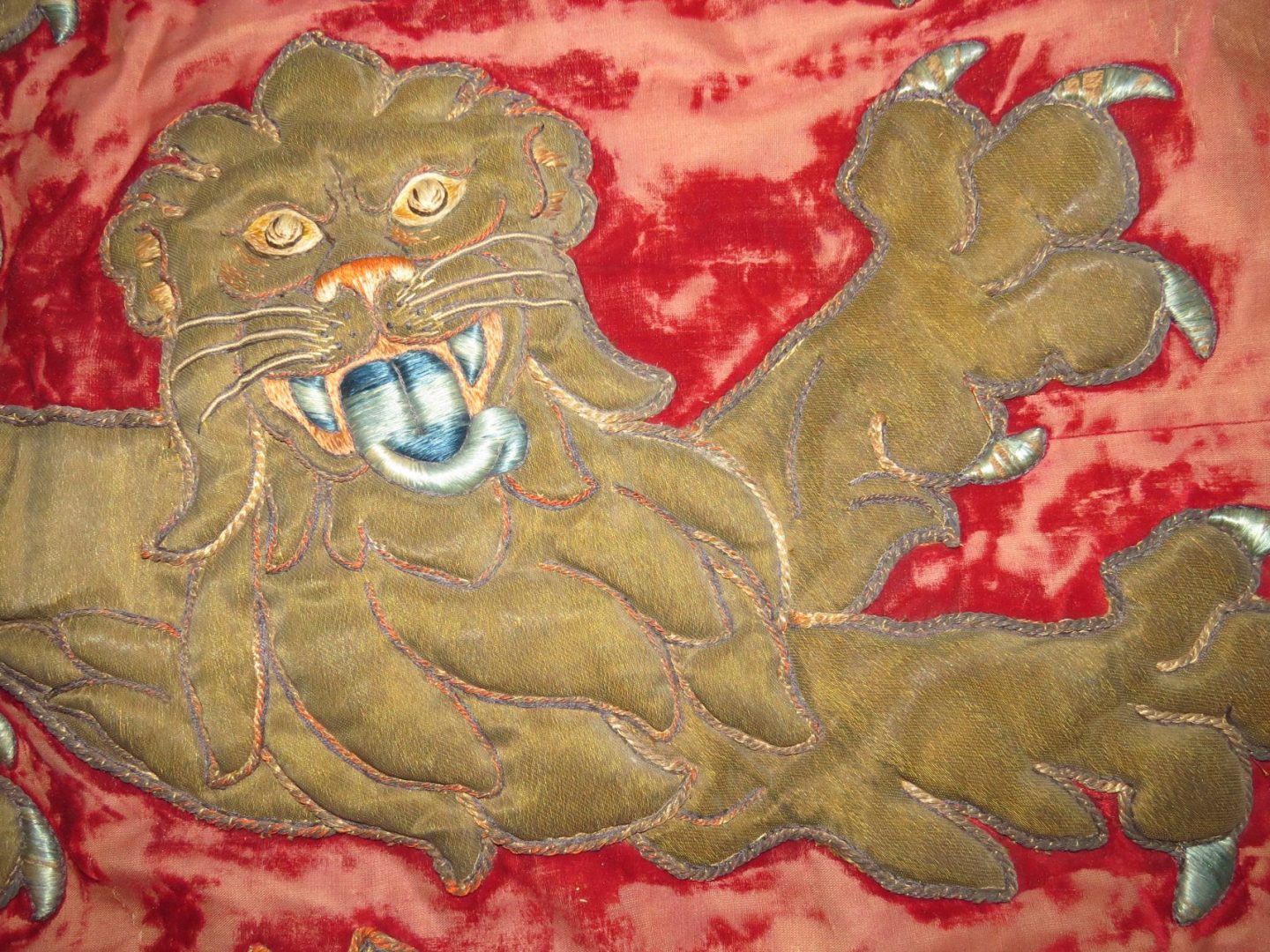

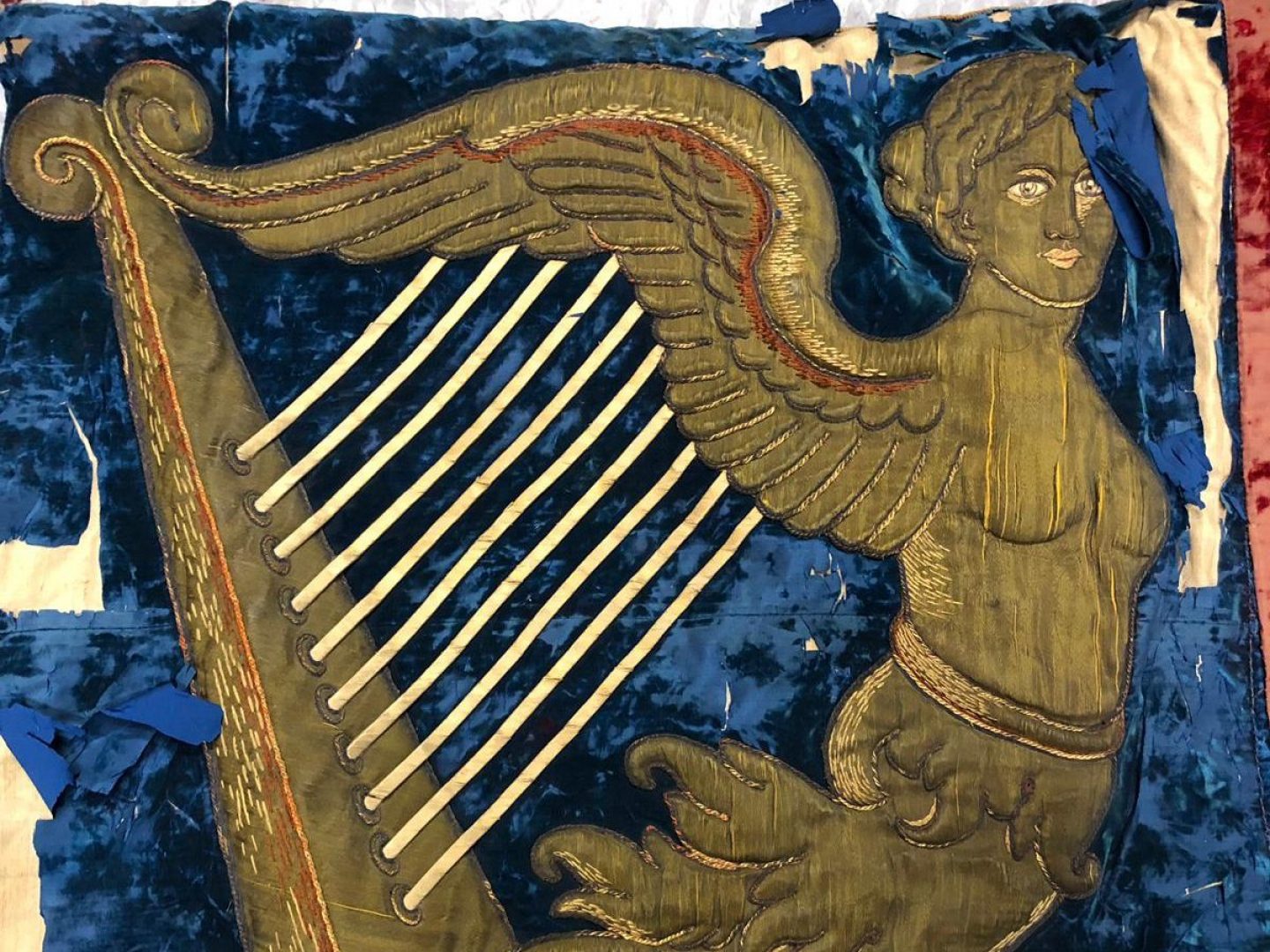
This particular embroidered version of King Edward VII’s banner would remain in place above the King’s stall in St George’s chapel until his death, signifying his position as Sovereign of the order. However, it wasn’t the only banner that was added to the chapel at this time. The Queen Alexandra Garter banner, also completed by the Royal School of Needlework, features a more complex embroidered design. Edward VII’s Arms are incorporated halved with her own coat of arms. Details of this latter panel include motifs and details from the Royal House of Denmark. Appliqued on the surface are more lions, horses, a goat, fish and even a cat. Some of these feature delicate hand painted eyes painted directly onto the surface of the fabric while others might have intricate goldwork crowns. The fact that Queen Alexandra had a banner at all is notable in its own right, she was the first Lady of the Garter since the middle ages. Upon her husband’s accession to the throne he issued a special statute ‘conferring upon Her Majesty the Queen the title and dignity of a Lady of that Most Noble Order’.
She was assigned a stall beside her husband in the Chapel and her banner was raised above it in 1903.
Edward VII’s banner hung in place until the King’s death in 1910 whereupon the banner was moved and eventually hung above his tomb to the right of the High Altar. In 1925 his wife, the widowed dowager Queen Alexandra, died of a heart attack at their Sandringham estate and was buried beside her husband in the same chapel. Her Garter Banner was removed from her stall but wasn’t hung above her tomb until 1983. Instead, it was retained by Garter King of Arms and passed down through the generation of his family before being rescued by the Dean of Windsor, who proved that the banner belonged to The Queen. When it was finally hung it had been restored by the Textile Conservation Centre but was still considered fairly frail. In 1995 both banners were removed from the chapel and kept in the separate Aerary of St George’s Chapel awaiting a thorough and intensive restoration.
Two decades later, Hugo Vickers, an English writer, broadcaster and journalist responsible for numerous Royal biographies, spearheaded a fundraising campaign to have the banners restored. In 1970 he had been appointed as a Lay Steward to St George’s Chapel, a role where he provides a Christian welcome to the Chapel at the major Christian festivals, Sunday morning services or Royal events. In this capacity in 2016 he approached Hand & Lock about the long overdue renovation and restoration of the two banners. Hand & Lock’s Director Jessica Jane Pile went on to compile a comprehensive report detailing the restoration strategy and the stages, and steps required to complete the process. Professional advice was sought from specialists in textile conservation and decisions had to be made about what could and should be saved and what was beyond repair and would had to be replaced. Lastly, a strategy to stabilise the least damaged sections and arrest their deterioration was detailed.
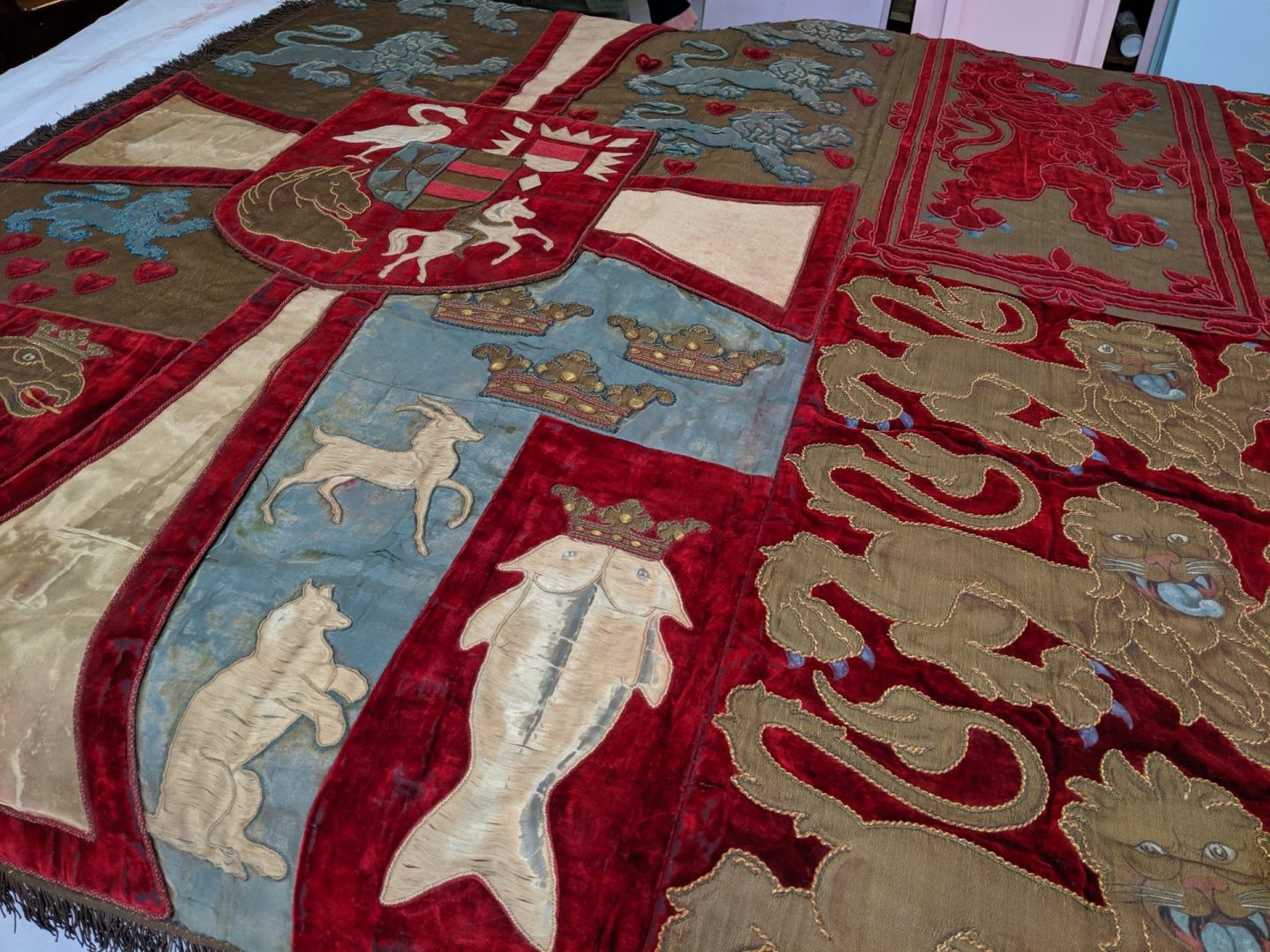
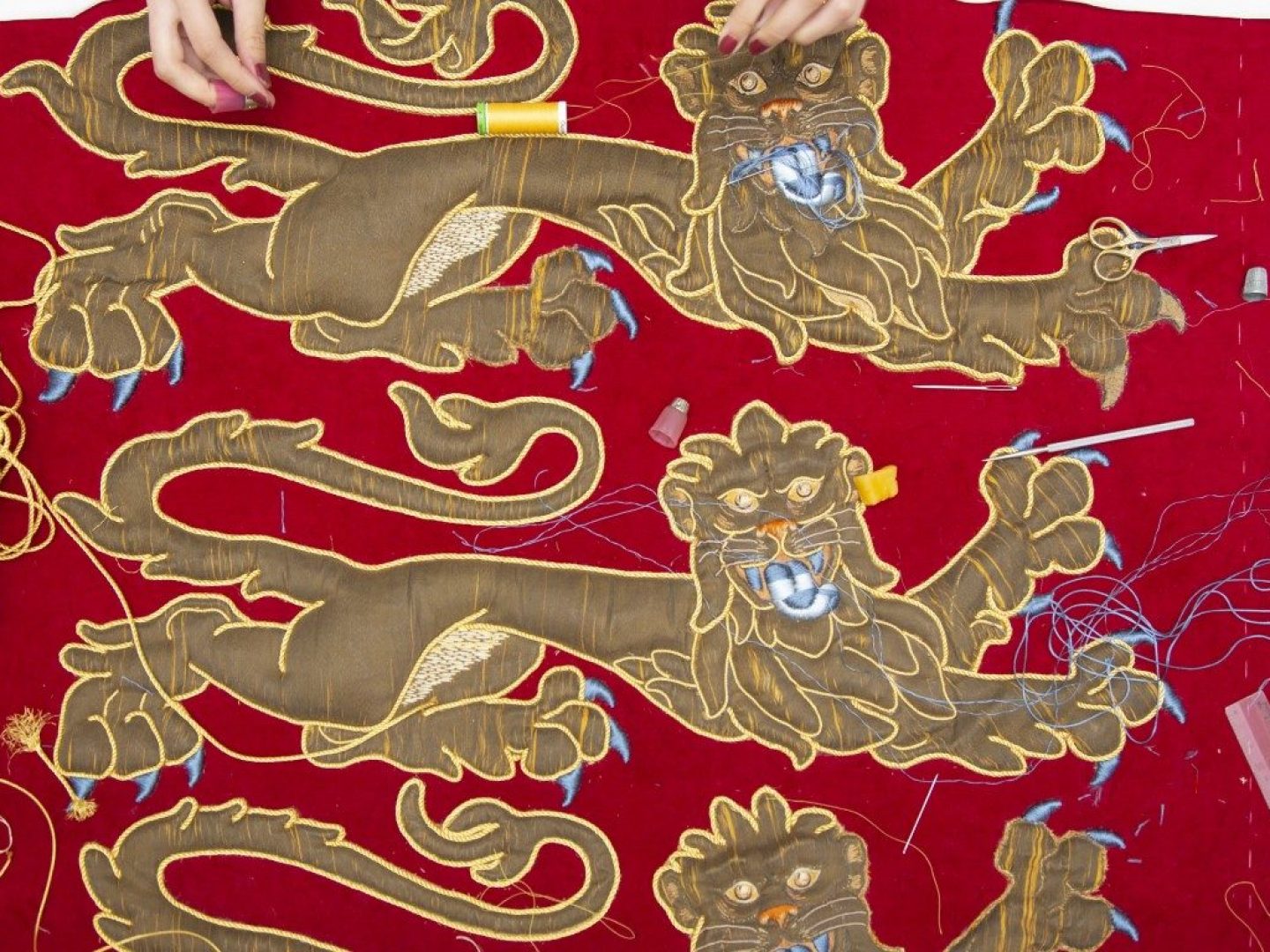
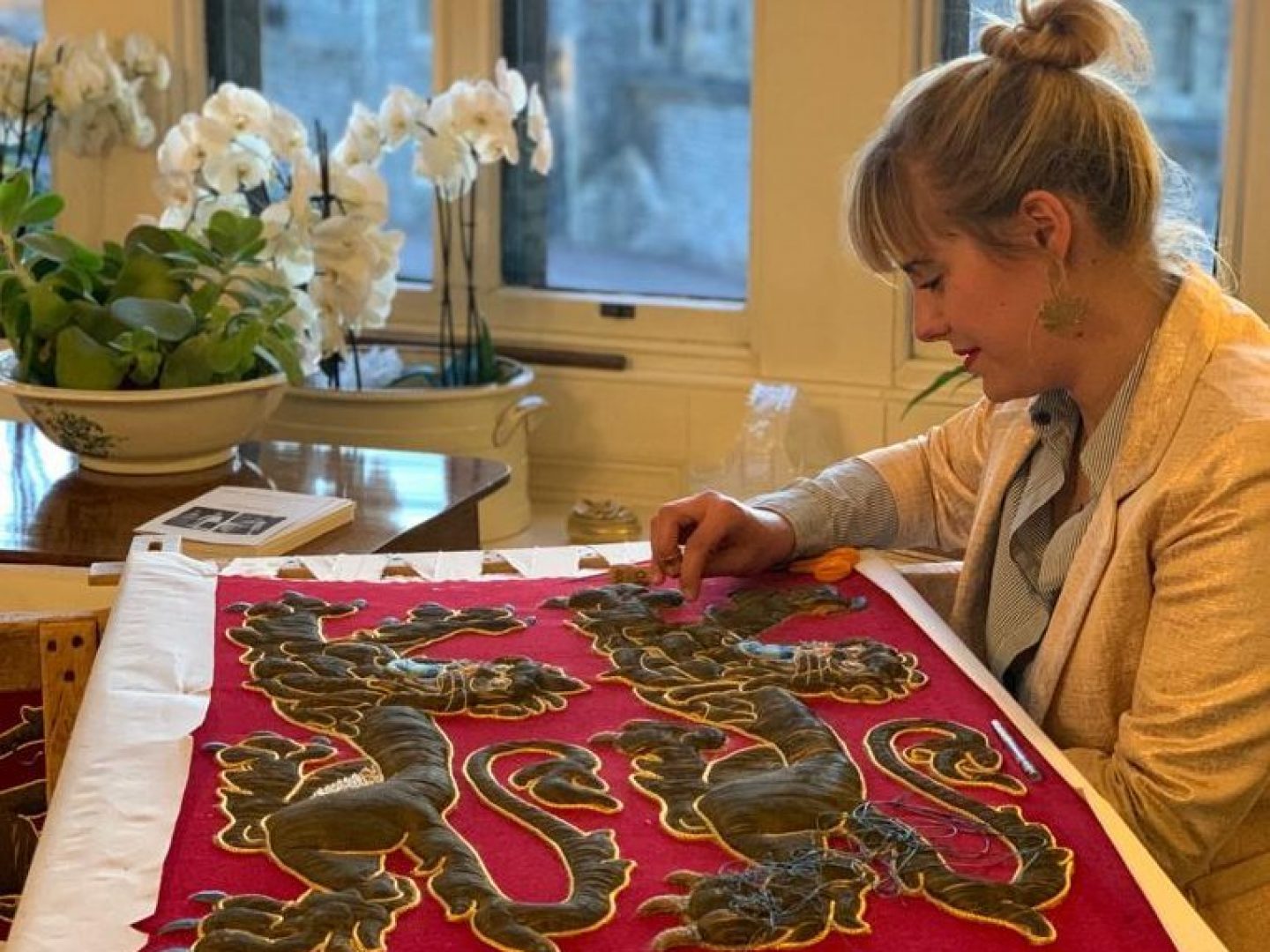
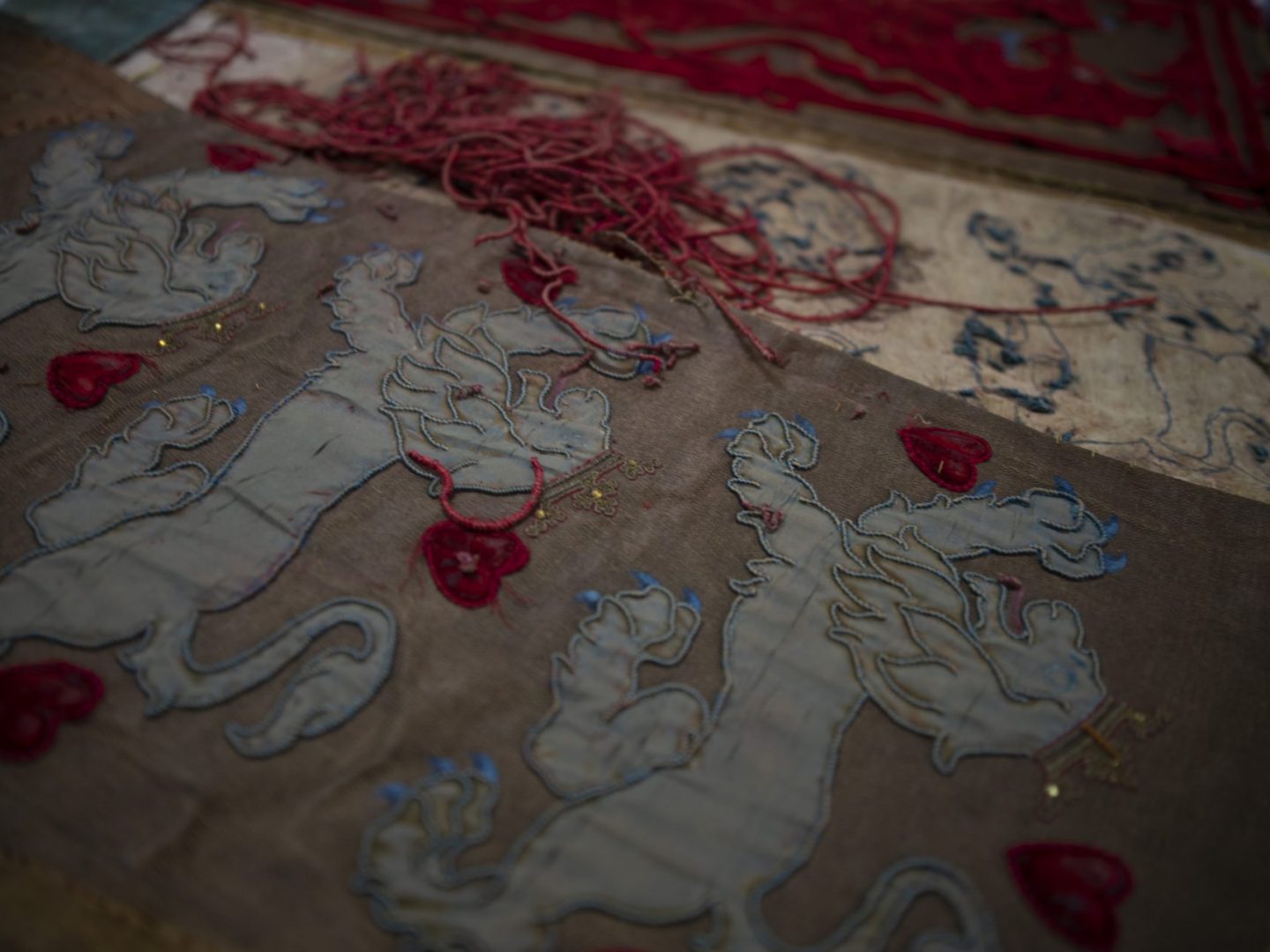
In 2019 work on the project commenced in the Hand & Lock workroom. The first damaged and delicate sections of the Edward VII banner were laid out on the workroom tables and the appliquéd designs were carefully cut free of the decaying and worn velvet base. A new base fabric of a sympathetic coloured velvet was stretched tight on a large frame ready for the transplant of the rescued portions. New restoration grade cotton wadding was sourced to replace the padding that had crumbled away underneath. The padded potions had to be carefully re-filled to ensure the embroidery regained their original shape and relief. Most of the motifs being transplanted were also stabilised with a special conservation net chosen to match their colours. They were then edged with a new mylar gold gimp chosen to highlight the shapes of the various motifs. When a quadrant was completed the panel was laid flat, carefully secured and covered before the next section was started.
For each of the remaining quadrants the process was much the same with new backing materials, new calico supports, new wadding and conservation nets over all the motifs.
However, the process repeated again and again still threw up countless surprises that the embroiderers had to consider and adapt to.
Over many months, and with each slow deliberate stitch, the whole banner was reinvigorated, gradually returning to its former splendour. In late 2019 the eight quadrants were reassembled into both sides of the Edward VII banner and delivered back to Windsor Castle, coinciding with the date on which Vickers had been appointed a Lay Steward in December 1969.
Meanwhile, back in Hand & Lock’s central London atelier the restoration process had already begun on the Queen Alexandra banner. Far more complex in its design the steps involved were more numerous, however the processes themselves remained much the same as before. By early 2020 the second banner was halfway to completion. Unlike the Edward VII Banner a previous restoration had been undertaken.
The embroidery team removed the motifs from the decayed base fabric and removed a worn conservation net. At this point the team could get a better look at the fine painted details which included eyes, claws modelling and shading. Depending on the condition decisions were made to preserve and stabilise details or else carefully and authentically repaint them.
These decisions were made, mindful that the conservation net could conceal finer painted details but conversely excessive over-painting would render the delicate handiwork of the original artist redundant.
When Queen Alexandra’s banner is ready, both banners will once again be raised over the tomb of the King and Queen in St George’s Chapel.
